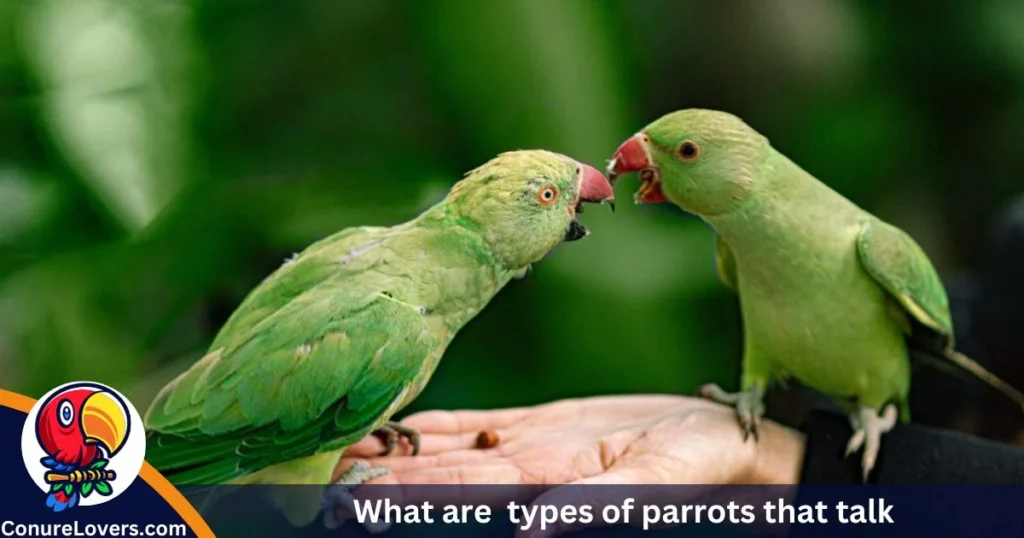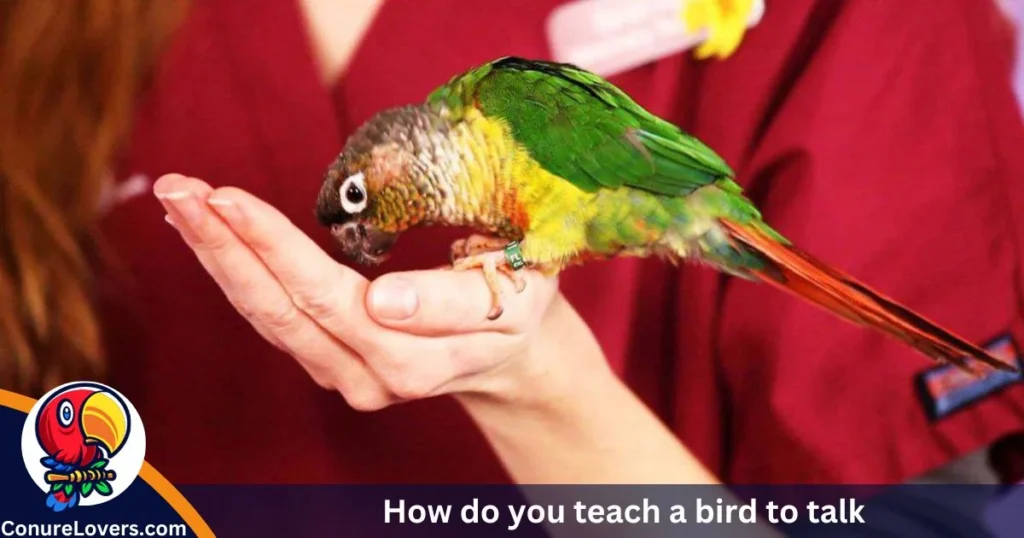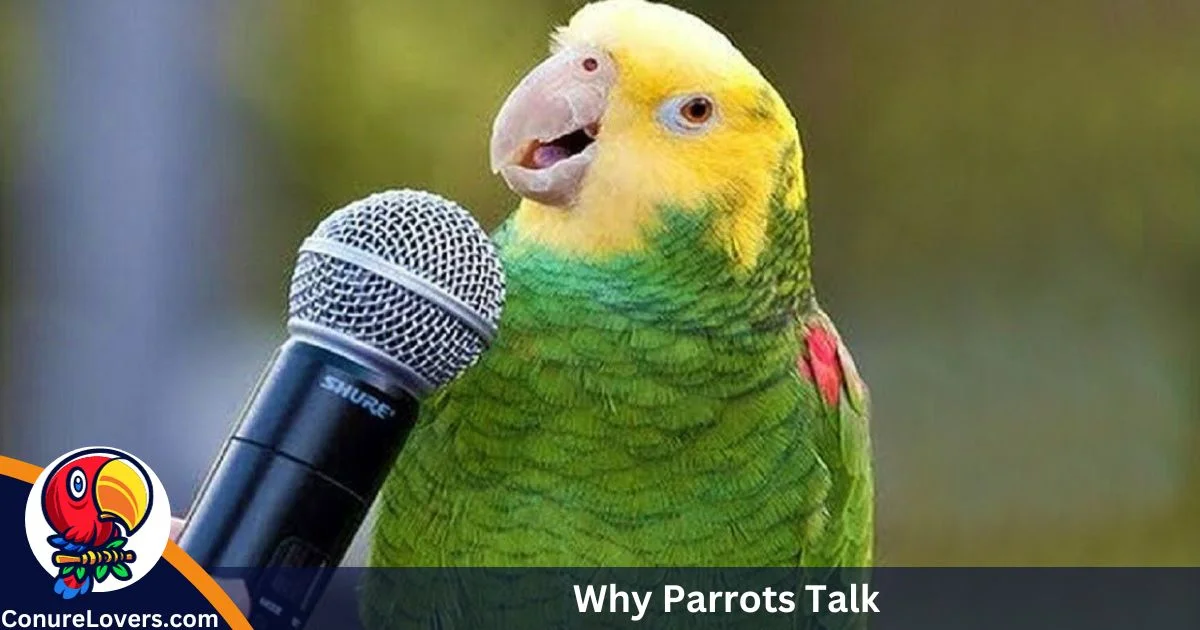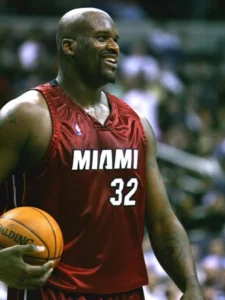This guide is all about parrots talking —why they talk, how they do it, and tips on training them to speak.
Considering bringing a parrot into your home? Awesome! Parrots are fantastic because they can talk!
If you’re looking for a bird that has the ability to speak, parrots are a fantastic choice. Not all bird species can vocalize, but parrots, among those that can, have an impressive knack for it.
So, if you’re leaning towards having a parrot as your pet and you’re eager to teach it how to talk, you’re in the right place.
Let’s dive into the world of chatty feathered friends!
How do parrots talk?
First and foremost, let’s tackle the question: how do parrots talk? Among the many species on Earth, only birds and humans can produce human language. As mentioned earlier, parrots are possibly the best at talking, displaying a remarkable ability to speak various languages.
While humans talk using vocal cords located in the larynx, the situation is different for parrots. They lack vocal cords, lips, and teeth. So, how do parrots talk? The key lies in their unique anatomy. Parrots have a complex vocal tract that starts with the syrinx, a structure also found in songbirds and crows.
Unlike humans, parrots‘ syrinx, located where the trachea splits into the lungs, is responsible for sound production. As air flows through the trachea and the syrinx, it causes vibrations on the syrinx walls. The vocal tract then modulates these vibrations to create sounds. This explanation holds true for other talking birds like crows and songbirds.
Isn’t it surprising that parrots can talk without a larynx? Equally fascinating is their ability to produce sounds similar to humans despite lacking teeth and lips. Unlike us, where teeth and lips play a crucial role in vocalizing and enunciating words, parrots rely solely on their vocal tract.
Read Also: Why Do Conures Bob Their Heads?
Why do parrots talk?
Another vital question about talking birds is why they speak. The primary reason parrots talk is that they are vocal learners. This means that parrots can pick up different sounds by listening to them. Once they’ve heard a sound, they can imitate it. So, parrots are adept at mimicking various sounds they hear.
An in-depth study on why parrots talk aimed to delve into the neuroscientific basis of their ability. According to research conducted at Duke University, any bird that is a vocal learner possesses a specific brain area called the ‘**song system**.’ This part of the brain is dedicated to the vocal learning ability found in birds.
According to this study, the song system of parrots is even more specialized compared to other bird species. A parrot’s song system consists of two layers: the ‘**core**’ (inner layer) and the ‘**shell**’ (outer layer). The division of the song system into the core and shell is unique to parrots. The study suggests that the ‘**shell**’ of the song system is what makes parrots such experts at mimicking.
Which was the first-ever talking parrot?

The talking skills of parrots have a rich history with numerous remarkable records. Even today, if you check social media, you’ll find many videos of pet parrots showcasing impressive vocal abilities.
The earliest documented instance of a parrot’s speaking ability dates back to the fifth century BC in Greece. This fascinating account was witnessed and recorded by a Greek historian named Ctesias of Cnidus. Ctesias documented a bird named Bittacus that could talk.
Bittacus was described in a way that many scholars believe fits the characteristics of a parakeet. According to Bittacus’s account, it was referred to as a Plum-headed bird. The description of this talking bird closely matches a specific parrot species known as the plum-headed parakeet. Therefore, this historical record is considered accurate and reliable.
Are parrots capable of understanding what they say?
Ever wondered if parrots are just copying us or really understanding what we say? Can you actually chat with a parrot, or are they just echoing our words?
Research suggests that talking birds, especially parrots, may connect some simple meanings to what they say. Yet, it’s not entirely clear if parrots truly grasp complex meanings behind their words.
What makes parrots special is their ability to pick up on the situation when they talk. Simply put, they understand the right times to use certain phrases, much like we do. For example, a pet parrot might greet you with “hello, how’re you doing?” because they’ve learned that’s what you say during your daily encounters. They can also link phrases like “Peekaboo” to certain actions, having observed your behavior.
Another interesting thing about talking parrots is their attraction to words that express excitement. Take Pebbles the cockatoo, for instance. She’s famous for her lively language (warning: might not be suitable for kids)! Surprisingly, these words aren’t always taught by the current owner but can be picked up from previous homes.
In various stories about talking parrots, they often catch onto swear words and loud exclamations because they sense the energy and excitement in those moments. So, it’s important to watch what you say around your bird to avoid them picking up phrases you wouldn’t want them repeating to your guests!
What are 5 types of parrots that talk?

Various types of talking parrots exist, each with its unique characteristics. This section highlights five such types:
Amazon Parrots
This group of parrot species is widely favored as domesticated pets, especially among medium-sized parrots. Known for their impressive vocalizing ability, Amazon parrots are popular due to their availability. While not overly noisy, they can be loud when using their parrot voice. Among parrot species, they are considered some of the most talkative. Their speech is clear, and they can efficiently mimic human speech, with some even imitating operatic singing well.
African Grey Parrots
Initially less popular as pets, the high intelligence quotient of African Grey parrots has led to increased popularity. They can develop an extensive vocabulary quickly, often learning words and phrases after just a few repetitions. Beyond mimicry, they showcase the potential to understand meanings and concepts if trained appropriately. Noteworthy is their preference for talking over screaming, although they can be noisy when exposed to various household sounds.
Indian Ringneck Parakeets
Originating in Asia, Indian Ringneck parakeets are known for their attractive appearance. This species is considered good talkers, with some capable of learning up to 250 words. They are a great choice for those seeking a talkative pet, although individual birds may vary in their ability to speak.
Quaker (Monk) Parakeets
Despite their small size, Quaker parakeets are vocal and can be quite loud. Owners often successfully teach them to say many words. Hand-raised Quaker parakeets can grow up to be highly affectionate and tame. They are known for their clear enunciation of words.
Eclectus Parrots
With a relatively shorter lifespan of about 30 years, Eclectus parrots are an option for those who prefer a quieter pet. While they are good talkers, they are not as loud as some other species. Eclectus parrots are fast learners and have a unique vocalization, including a distinctive honk when stressed, adding to their fascinating array of sounds.
Are male parrots better talkers than female parrots?
Did you know that in some types of parrots, like budgies and cockatiels, male birds can talk more and have a bigger vocabulary than females? But here’s the thing, not all girl budgies or cockatiels are silent. They can learn to talk too; it just might take a bit more time and practice.
In the wild, boy parrots tend to be chattier than girls. That’s probably why some boy parrots learn words faster.
But, not every parrot follows this rule. For Amazon parrots, African greys, and macaws, it doesn’t matter if they are boys or girls—they can both talk great!
So, some parrots have chatty boys, but not all of them. And for certain parrots, like Amazon parrots, African greys, and macaws, it doesn’t matter if they are boys or girls—they can all be good talkers!
How do you teach a bird to talk?

Getting a Parrot:
I usually don’t suggest getting a parrot just because they can talk. Not all parrots talk, and it’s important to choose a parrot because you genuinely want one. If your parrot ends up being talkative, that’s a delightful bonus!
Teaching a Parrot to Talk:
Now, if you have a parrot and want to teach it to talk, here’s what you can do:
- Research Your Pet Bird: Some parrots may not vocalize or talk. Do research on the bird species you have; certain species are better at talking. However, remember that talking should not be your main reason for getting a parrot.
- Choose What You Want Your Parrot to Say: Different parrots learn at different rates. Start with short phrases like “hello” or “bye-bye.” Parrots respond well to words that convey excitement, so say them with enthusiasm.
- Repeat Phrases or Words Frequently: Parrots may pick up certain words faster. Repeat phrases and words often. If needed, use tools like CDs or recorders for supplementary material, but one-on-one interaction is crucial.
- Reward Them: Parrots learn well when rewarded. Praise or treat them when they say what you want. This positive reinforcement increases the chances of them repeating it.
- Patience is Key: Every parrot is unique. Some learn quickly, while others may take months or even years. If progress is slow, start with simpler tasks like teaching them to whistle. Establish a routine for consistency and discipline. It takes time, love, and training to make a parrot talk.
A final note
Parrots learn to mimic by hearing words repeated, so saying the word many times is the best way to get your bird to say it back. Although it’s ideal for owners to teach their pets directly, some people use additional tools like tape recorders and CDs to help their birds learn to talk.
- Parrot Vocalization:
- Parrots don’t have vocal cords; instead, they use the syrinx to produce vibrations, modulated by the vocal tract, allowing them to speak.
- Parakeets as Vocal Learners:
- Parakeets are vocal learners, enabling them to mimic human sounds. They grasp simple associations but not necessarily complex meanings, though they can be trained to understand them.
- Gender Differences in Talking:
- In certain parrot species like budgies and cockatiels, male parrots are often better talkers than females. However, this gender-based difference doesn’t apply to Amazon parrots, African greys, and macaws.
- Training Parrots to Speak:
- Training involves repetition of desired phrases and words. Patience, discipline, and love are crucial in the process.
- Conclusion:
- Bringing a parrot into your home is a great idea, and with this guide, you can train your feathered friend to become an excellent talker!

Matthew Porter here, your Conure Care Companion at “Conure Lovers.” Together, let’s build a harmonious and joyful space for your feathered friend. I’m here to make conure care easy and enjoyable!












